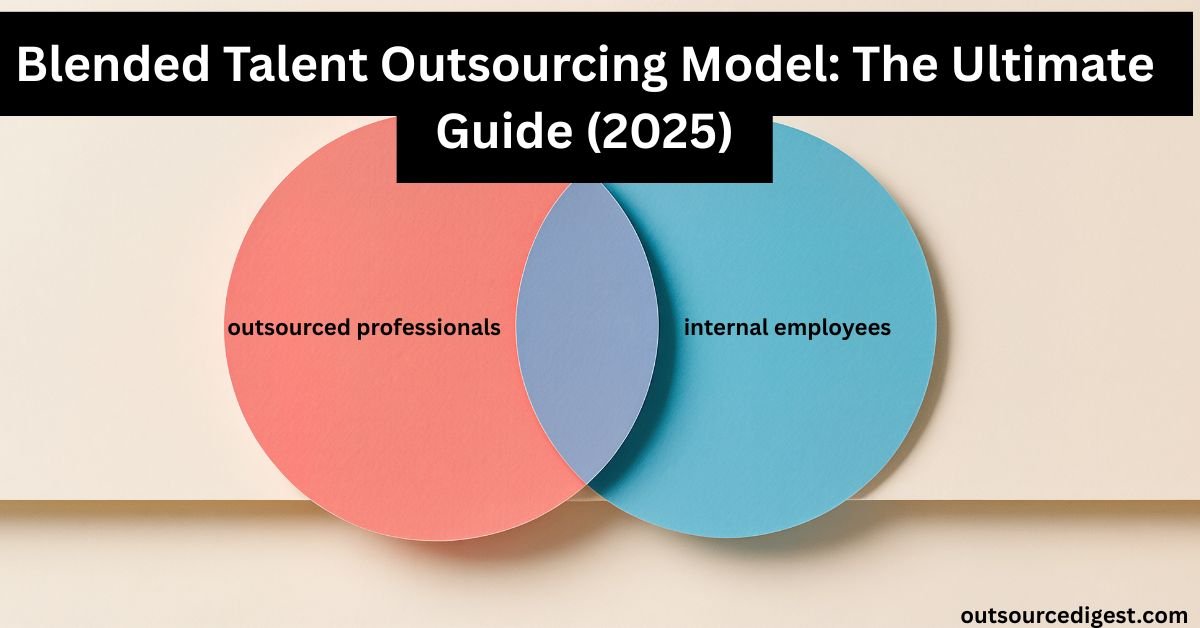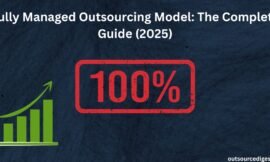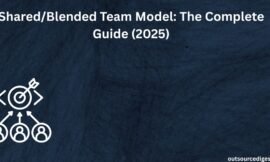Businesses today face a fast-paced, competitive environment where talent flexibility is no longer optional—it’s essential. The Blended Talent Outsourcing Model offers organizations the ability to combine in-house teams with outsourced specialists to achieve scalability, cost efficiency, and innovation.
This guide will explore the concept, benefits, challenges, and practical applications of blended talent outsourcing. Whether you’re a startup aiming to grow quickly or an enterprise looking to optimize resources, this model provides a balanced approach to workforce management.
What Is the Blended Talent Outsourcing Model?
The Blended Talent Outsourcing Model is a hybrid workforce strategy where a company integrates internal employees with outsourced professionals (either nearshore, offshore, or onshore) to execute projects or ongoing operations.
This model allows organizations to:
- Retain control of critical business functions.
- Access specialized skills on demand.
- Scale teams up or down based on project requirements.
It blends the stability of in-house staff with the flexibility and cost-effectiveness of outsourcing, making it ideal for dynamic industries like IT, software development, cybersecurity, and digital marketing.
Key Characteristics of the Blended Talent Model
To understand how this model works, here are its defining features:
- Shared Responsibility
In-house teams focus on strategy, decision-making, and core business.
Outsourced talent handles specialized or scalable tasks.
- Flexibility and Scalability
Organizations can quickly add or reduce external staff based on workload, avoiding the cost of permanent hires.
- Access to Global Talent
Blended outsourcing opens opportunities to hire niche experts from different markets without long-term commitments.
- Technology-Driven Collaboration
Cloud platforms, project management tools, and communication apps ensure seamless integration between in-house and outsourced staff.
Benefits of Blended Talent Outsourcing
- Cost Optimization
Companies save on recruitment, training, and operational expenses by outsourcing certain roles while maintaining core staff in-house.
- Increased Agility
Businesses can respond faster to market changes by tapping into external specialists when needed.
- Broader Expertise
Combining local knowledge with international expertise enhances problem-solving and innovation.
- Focus on Core Activities
Internal teams remain focused on strategic priorities while outsourced experts manage time-consuming or highly technical tasks.
- Reduced Hiring Risks
Instead of committing to long-term hires, companies can test talent through outsourcing before transitioning them to permanent positions.
Potential Challenges of the Blended Talent Model
Despite its benefits, the model comes with challenges:
- Communication Barriers: Different time zones, cultures, and work practices can create friction.
- Integration Issues: Aligning external teams with internal processes may require extra effort.
- Security Concerns: Outsourcing sensitive functions can increase cybersecurity risks if not properly managed.
- Management Complexity: Coordinating blended teams requires strong leadership and effective project management tools.
Best Practices for Successful Implementation
To maximize the effectiveness of the Blended Talent Outsourcing Model, businesses should adopt the following best practices:
- Define Clear Roles and Responsibilities
Clearly outline what tasks will be handled internally versus outsourced to prevent overlaps and confusion.
- Invest in Communication Tools
Use platforms like Slack, Microsoft Teams, or Asana to ensure real-time collaboration and transparency.
- Prioritize Data Security
Implement strict cybersecurity protocols when sharing sensitive information with external partners.
- Focus on Cultural Alignment
Choose outsourcing partners that understand your company culture and values to ensure smooth collaboration.
- Regular Performance Monitoring
Track progress using KPIs, regular check-ins, and performance reviews to maintain accountability.
Real-World Examples of Blended Talent Outsourcing
Tech Startups: A startup may keep its product management team in-house while outsourcing software development to an offshore team, ensuring faster product launches.
Marketing Agencies: Agencies often retain strategy and client relations internally while outsourcing specialized roles like SEO, PPC, or content production.
Enterprises: Large organizations may blend in-house IT staff with outsourced cybersecurity experts to manage risks and maintain compliance.
Blended Talent vs. Other Outsourcing Models
Traditional Outsourcing: Entire functions are outsourced with minimal in-house involvement.
Staff Augmentation: Companies hire external staff temporarily but manage them directly.
Blended Talent: A hybrid that combines both approaches, offering flexibility with shared control.
This makes the blended model more adaptable for businesses that want strategic balance rather than full dependency on external providers.
When Should You Use the Blended Talent Outsourcing Model?
The model is most effective if your organization:
- Needs quick access to specialized expertise.
- Operates in a fast-changing industry like IT, fintech, or healthcare.
- Wants to scale operations without high fixed costs.
- Values strategic oversight while leveraging outsourcing for execution.
Future Trends in Blended Talent Outsourcing (2025 and Beyond)
AI-Powered Collaboration: AI tools will enhance coordination between in-house and outsourced teams.
Remote-First Approach: As remote work becomes mainstream, blended talent outsourcing will be easier to manage.
Greater Focus on Security: Cybersecurity measures will remain a top priority for businesses blending teams.
Outcome-Based Outsourcing: Payment models will increasingly be tied to performance and deliverables rather than hours worked.
Conclusion
The Blended Talent Outsourcing Model is emerging as a powerful workforce strategy in 2025. By combining in-house strengths with outsourced expertise, companies can achieve agility, cost savings, and innovation without losing control of their core functions.
For businesses navigating growth and uncertainty, this hybrid approach offers the best of both worlds—making it a cornerstone of modern outsourcing strategies.





